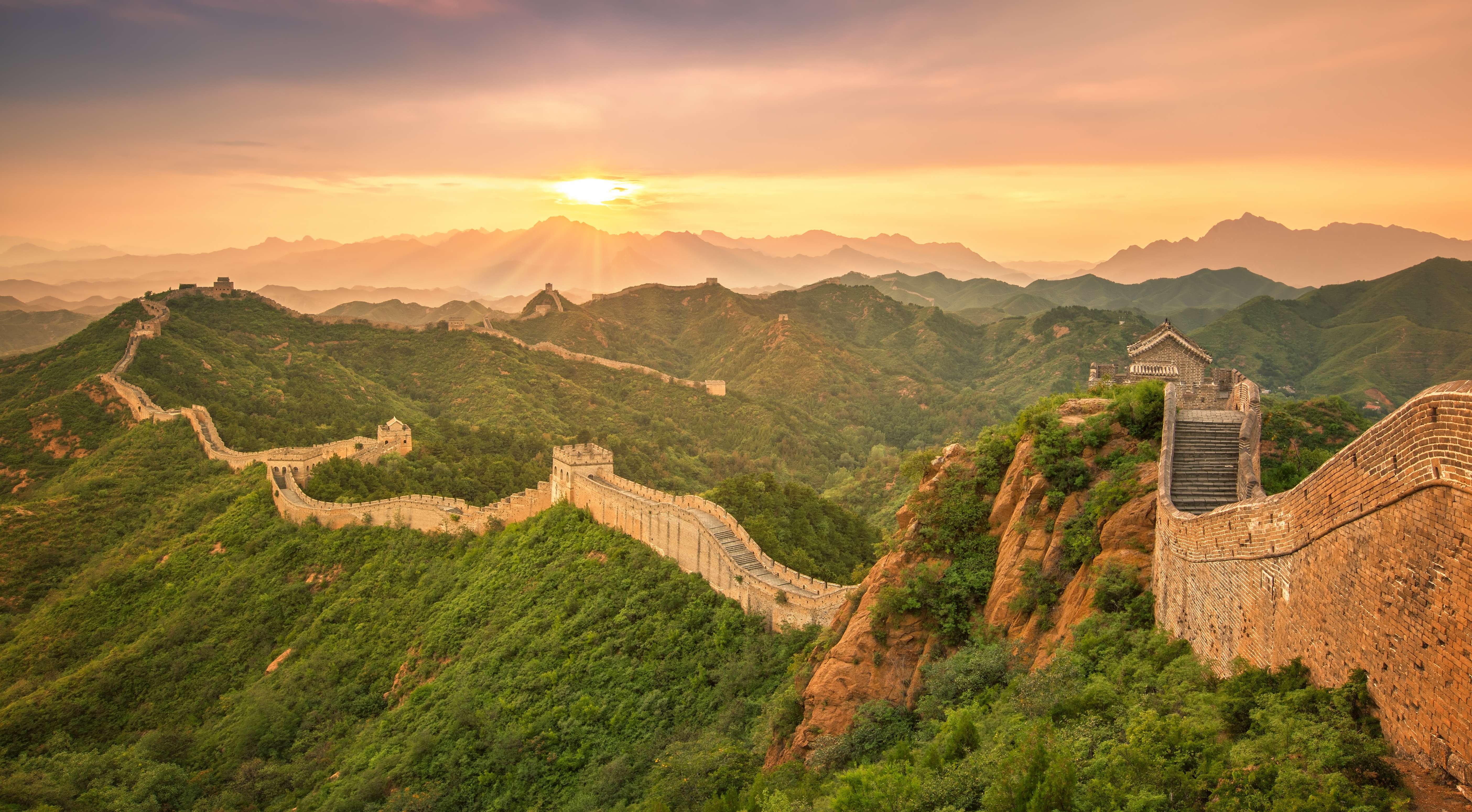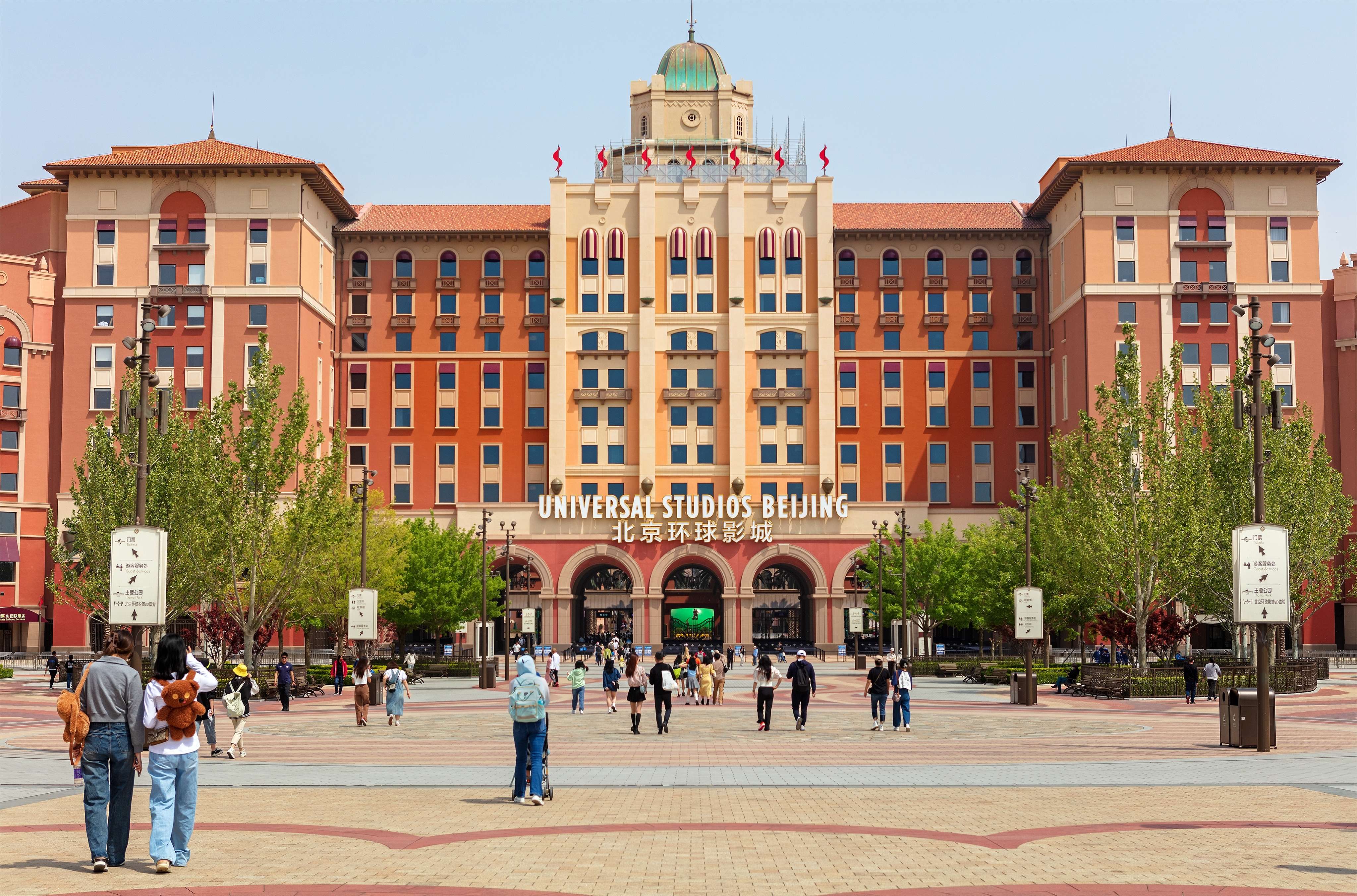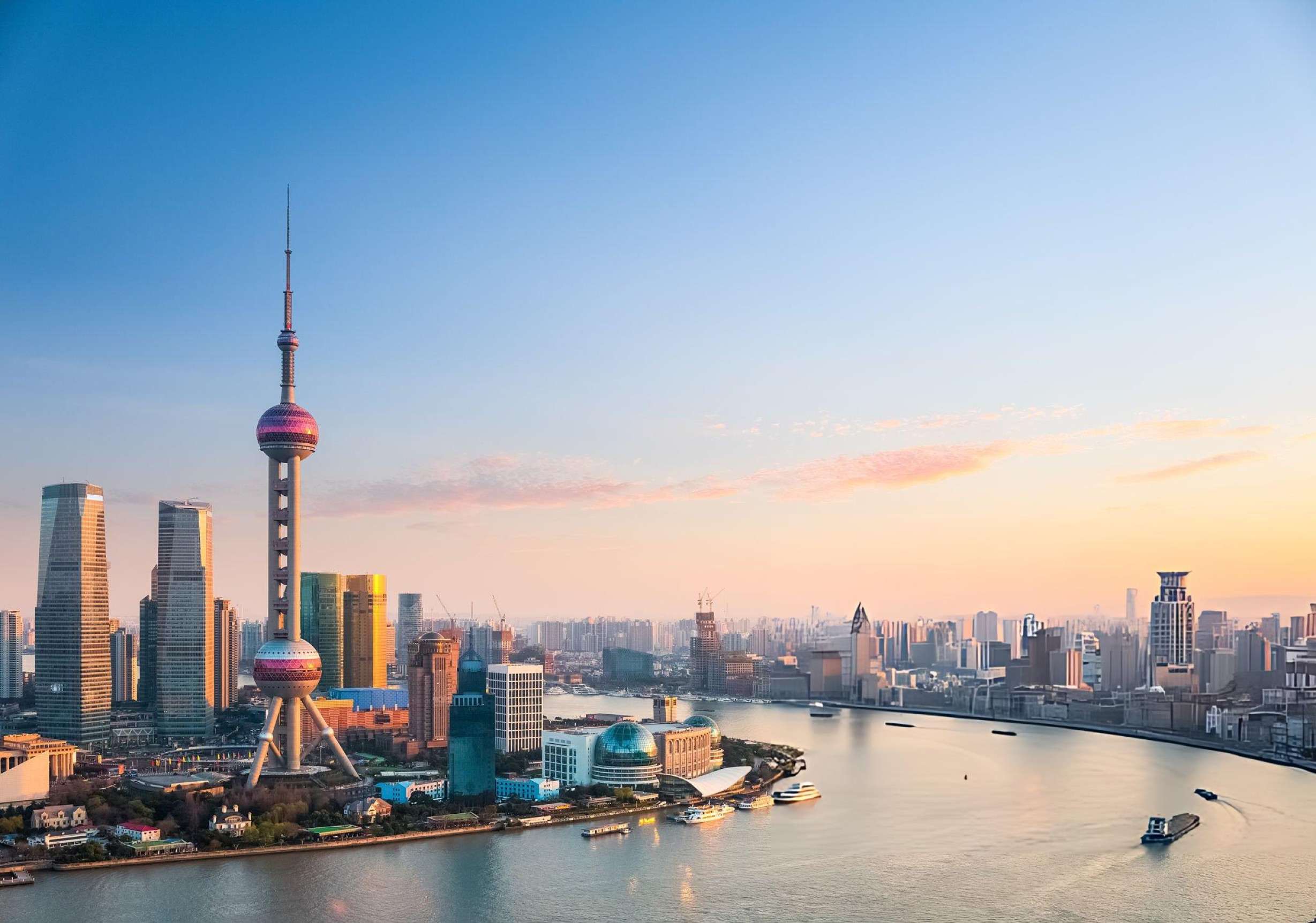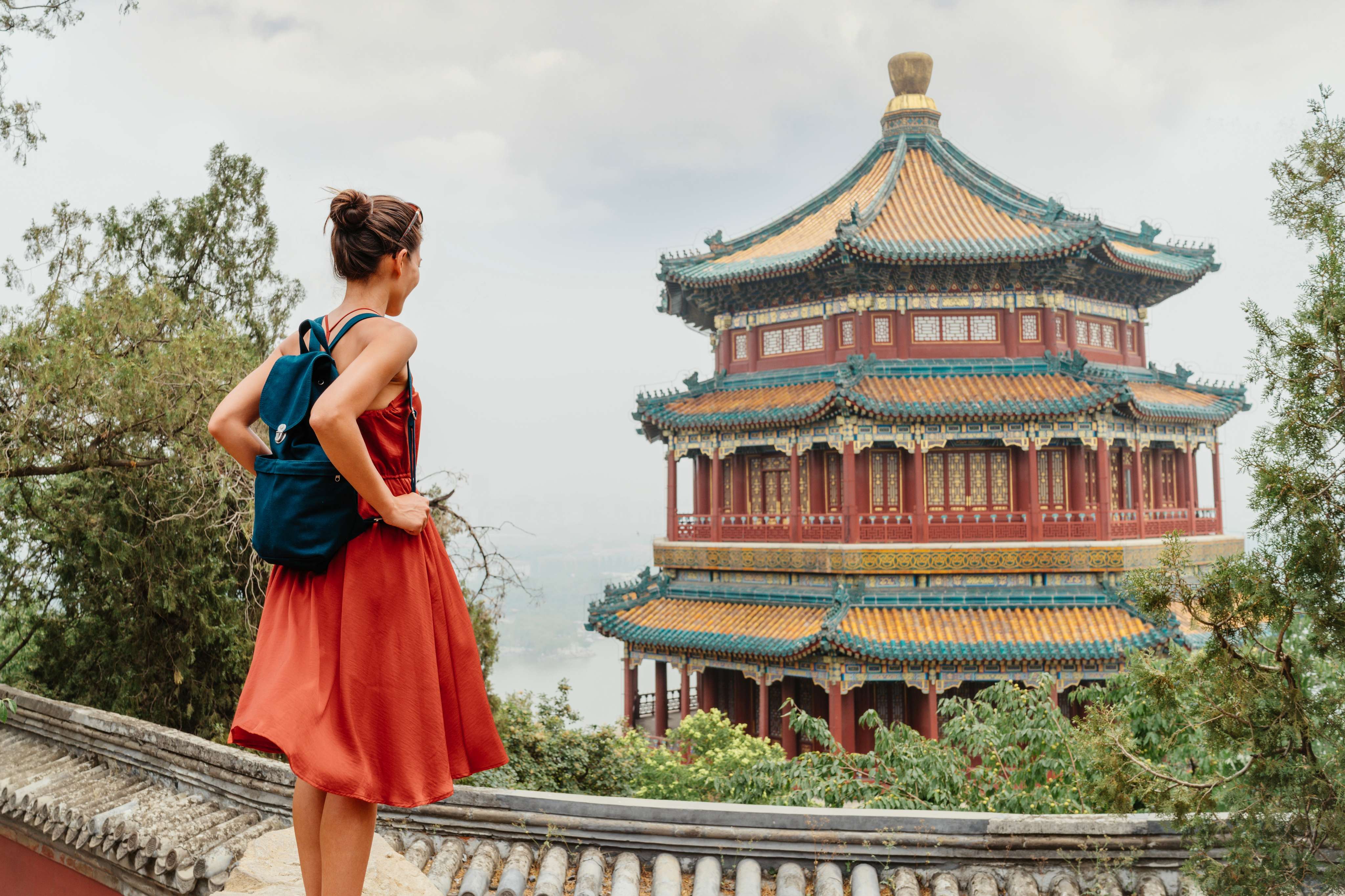Beijing
About Beijing
Tourist places in Beijing attract millions of travellers to visit and explore the city of old and new. Continuously reimagining in totality as the city gallops and strides towards the succeeding time ahead, yet intricately and inextricably allied to its dazzling, undisguised past, the city of Beijing is as enthralling as it is convoluted. In Beijing food defines obsession, adventure defines extremes and joy defines never-ending. A dazzling array of distinct cuisines gets you to witness the true city in entirety as it reflects utter joy in food. Dining outside is the major social adept activity; as it is in restaurants that the people of Beijing gather with pals, family and loved ones. The menus in Beijing will make you salivate over delectable Peking duck, succulent dumplings, and chewy & easy noodles
Food is sampled from every nook and corner of China. Beijing exhibits more than sixty thousand restaurants covering every base of the city. There are quite meager places on earth that can replicate the extraordinary panoramic perspective on display in the city of Beijing. Beijing represents in total six UNESCO World Heritage Sites in the city alone. At the heart of the city is placed a glorious Forbidden City, delineating a regal palace salver like no other. Also, the home to exalted temples that potentially aspire to cosmogony and excellence, the center of the city is crisscrossed by attractive hútòn: a retrospective and antiquated alleyway that swarms with life, joy and happiness at present as it was hundreds and hundreds of years ago. And to cover it all, the awe-inspiring and captivating Great Wall tops the list of the tourist places in Beijing and it quarries its way through the north hills of the town. Beijing is not just an ancient beauty bringing tourists but it is home to the world's’ oldest and praised upon ancient architectures.
Beijing Packages

Golden Route of China | Wonders of the East
.JPG)
The Great Wall Marathon Tour 7 days China
Beijing FAQ's
Travel Advice
· Do not get involved in fights or brawls with anyone.
· Do respect the local cultures and traditions.
· Do not get indulged in drugs of any form.
· Make sure you do not travel alone in the night.
· Girls please ensure that you do not get over friendly with someone you barely know.
· Do not eat street food without checking the quality.
· Make sure you drink only bottled mineral water.
· Check for the seal before you buy a water bottle.
· Do not buy a bottle from the brand you do not know.
· Before going to a restaurant, make sure you research well about the applicable dress code and dress accordingly.
· Learn a few words from the local language of the region. It can be a good way to communicate with the locals and understand the local traditions and cultures.
· Always book a hotel in an area that is centrally located.
· Avoid staying in any shady area.
· Keep the vendors at bay.
· Do not entertain the touts.
· Do not entertain the beggars.
· Always carry with you at least one proof of your identity at all times.
· Do not leave your passport in the hotel room.
Book a room in the hotel that has a room safe.Drinking Law
The legal age for drinking in Beijing is 18 years.
Our Recommendations: What you can’t afford to miss
The Imperial Palace and the Forbidden City
Also known as the Forbidden City, the Imperial Palace is the most significant building of China and is a major tourist attraction. The immense size of it was made during the Ming Dynasty from the period between 1406 to 1420. It got its nickname of being called the Forbidden City as the ordinary citizens don’t have an access to the place. Spread over an area of 720,000 square meters, the city is encompassed by 10-meter-high wall. The private quarters here were used by the Emperor and his concubines. Highlights of the place includes the Meridian Gate which was built in the year 1420, Hall of Supreme Harmony which is about 35 meter high and comprises of the beautifully decorated gilded imperial throne, the Hall of Preserving Harmony that was once used as the Emperor's banquet hall, Hall of Military Courage which has a private audience hall for the emperors and a permanent residence. five richly decorated white marble bridges and the Golden River Bridges. Located in close proximity is the Imperial College that was founded in around 1287 by Kublai Khan. It was later shut down in 1900.
Tian'anmen Square
Tian'anmen Square is the world’s largest inner city square. Built in 1958 to celebrate the 10th anniversary of the Chinese Republic, the place can accommodate a million people. It is considered as a center of the Communist China. Prominent highlights of the place include the splendid Tian'anmen Gate which was completed in 1417 and is the Gate of the Heavenly Peace; Rénmín Yngxióng Jìniànbi), the Monument to the People's Heroes and a 38 meter tall obelisk which comprises of 17,000 pieces of marble and granite. Other places to see include the Museum of the Chinese Revolution which has exhibits which illustrate the different stages of the Chinese Revolution of 1919, the growth of Communist Party in China and the Chairman Mao Mausoleum which has preserved the body of Mao in a crystal sarcophagus.
Beijing Capital Museum
The phenomenal Beijing Capital Museum is one of the leading art museums of the country. The museum was opened in 1981 and boasts of a prominent collection of artifacts which comprise of the archaic items of bronze and porcelain, traditional artwork and calligraphy along with several fine statues from the Chinese as well as the other Asian cultures. Other prominent highlights of its supreme collection of over 2,00,000 important cultural artefacts, many of which are originating from in and around Beijing comprise of the huge stele of Emperor Qian Long that has a weight of over 40 tons. It stands tall at 7 meters and consists of a number of ancient writings and scripts. Another modern landmark of Beijing which you must visit is the Giant Egg that is more commonly known as the National Centre for the Performing. The place is also known as the best opera houses of Asia. This building opened in the year 2001 and ever since then it has hosted a couple of world’s leading opera performances. If you are interested in watching a performance, you definitely must visit the place. Watching an opera is one of the best things to do here.
Beihai Park
Located just a short distance from the Imperial Palace is the Beihai Park which happens to be Beijing’s oldest surviving Imperial Garden. The park was laid out at the beginning of the 10th century and is a beautiful open space which gets its name from the nearby Lake Beihai. Amongst the most prominent structures here include the Round Fort which has been around the Yuan period of 1271 and 1368; a large black jade vase from the early 12th century; 1690 built Hall of Enlightenment and a meter and a half tall Buddha statues which is carved from a single block of white jade. Other prime features include the Living Quarters of Mei Lanfang who was a prominent male star of the Peking Opera and specialized in essaying the role of a woman; opulent residence of Song Qingling where the widow of the founder of the Sun Yat-sen lived for some 18 years until her death (as of now, the place is converted to a museum and is a great sightseeing attraction); the residence of Guo Moruo where the renowned historian and writer lived from 1963 to his death in 1978 and the magnificent 17th-century White Pagoda on the Island of Exquisite Jade.
The Temple of Heaven
The beautiful Temple of Heaven has been in existence ever since the year 1420. It comprises of a group of some of the most sacred of the Beijing’s buildings. Enveloped by lush vegetation, there are a number of lovely old shrines and temples which are set out in 2 sections – one semi circular and the other one rectangular. The sections together symbolize earth and heaven. It was only here that on the day of the winter solstice, the emperor would come down the Heavenly Altar in a ceremonial vibe to pray for a good harvest. He would then offer sacrifices in the prominently decorated Hall of Prayer for Good Harvests. When here, make sure you definitely visit the ECHO wall of the temple that echoes even the quietest of the voices as an effect exaggerated by three unusual echoing stones.
What you will like there?
Numerous Historical Monuments
Beijing boasts of a history that goes back to 3000 years. Of these over 8 centuries were as a National Capital of China. The capital city has a variety of places of historic interest. These include tourist attractions such as the Summer Palace, the Temple of Heaven where the archaic emperors used to perform solemn rituals to avail bountiful harvests, the mausoleum of 13 emperors of the Ming Dynasty and Ming Tombs.
The World's Grandest Tourist Sights
Beijing is a home to a variety of magnificent sights that set both national and world records. Some of the sightseeing and most important places to see include the Great wall of China, the Forbidden City and the Tian’anmen Square.
Well-Preserved Historic Culture
The significant attractions in Beijing are the zigzagging hutongs which are a quintessential part of the Beijing’s local culture. Set up in 13th century, the Hutongs are basically tiny public alleys that have a private courtyard residence. This is the way how Old Beijing looked like. Huntongs can also be seen as old folk like custom museums which present a window in a traditional manner of life mixed with the maze of narrow streets and archaic architecture.
Lively Outdoor Markets
Beijing has a number of shopping districts which offer a mind boggling array of goods. Apart from the regular shopping districts of the city such as the Qianmen Street or the Wangfujing Street, you shouldn’t be missing out on the outdoor markets that are a major draw for the foreign travelers. Do check out the Xiushui Street to shop for specialties such as silk, fresh water pearls, antiques and a lot more. You can also check out the Panjiayuan "Antiques" Market.
Colorful Nightlife
In the China’s capital city, Beijing, people come over from all across the globe. It is the vitality and the diversity of the city which has endowed the city with a myriad of colorful and varied nightlife. A lot of tourists who come here tend to relax and unwind in the bars. The ample number of performances and shows including the acrobatics and the Peking Opera are attractive for anyone and everyone who enjoys live entertainment.
Accommodation of All Levels
Beijing has just about every type of accommodation and stay to appeal to the local and international travelers. Keeping in view the burgeoning tourist industry, the city offers accommodation that can cater to all budget needs – star rated hotels, hostels boutique hotels and inns.
Convenient Transportation
Beijing being the national capital is the focal point of the domestic transportation. It has several direct international flights that will take you to all the major cities of the world. Besides, the rail and air connections too link Beijing to just about every point in China. Moreover, fleets of buses take you all round the city.
Post-Olympic Atmosphere
In the year 2008, Beijing hosted a magnificent Olympics. Not just the city but rather the whole nation gathered up enthusiastically to partake in the Games. As a result of this, the city has grown cleaner and more beautiful over the years. One visit to this Olympic site will present to you an aftertaste of the glorious moment.
Recommended reads for destination
Website: Official Website
When is the best time to visit Beijing?
The best time spans to traverse Beijing are in between the months of March to May and in between the months of September to October. The temperate season and climate at this time span promise to offer the best. However, in contrast, visitors should rethink to visit during summers, this time of the season brings uncomfortable and hot temperature while winters ushers in freezing cold temperature which further result in snow sometimes.
Climate distinction of Beijing depending upon the travelers:
Beijing offers four discern seasons which represents diversified beauties in distinct times of the year. The climate is windy but warm during spring that ranges between the months April to May. The climate is extremely hot in summer between the months June to August. The weather is cool and pleasant during the autumn time in between September to October. It is freezing cold during the winter season in between November to mid of March. The warmest month in Beijing is the month of July whereas the coldest month is January.
- April to May – spring
To travel the city in spring in between the months April to end of May is one of the best ideas. You just need to carry your lightweight clothes, long sleeved t-shirt or shirt, and two or three cardigans or jackets. At this time, the climate is windy, dry and a little warm and the temperatures vary between the day and night. Therefore, you must dress warmly while going out at night in Beijing.
- June to August - summer
The months in between June to August is quite warm with copious rainfall. Therefore, you must carry light summer clothes as the temperature in between the months of July to August ranges in between 30 degree Celsius to 40 degree Celsius. You might witness heavy and short rainstorms during the afternoon time during sunny days. Hence, while traveling during this season, you must pay full attention to the forecast and pack umbrella and raincoat along.
- September to October – autumn
Autumn in Beijing is for short time from mid-September to end October. Though short but beautiful, autumn features plentiful sunshine and mild temperature. The Badaling Great Wall and Fragrant Hills flaming up the maple scene is a delight in a true sense. You must remember to carry thin coats and long-sleeved shirts during the autumn season. The temperature gradually falls down from late October, therefore it is essential for you to carry warm clothes.
- November to March – winter
Winter delineates cold, long and dry weather that lasts from the early November to March. The average temperature is below 0 degree Celsius for the months December, January, and February. The visitors coming from the tropical countries might find the weather of Beijing inhospitable in nature. When visiting Beijing at this time remember to carry woolen sweaters and thick coats. On your visit to Beijing at this time of the year, you might get to experience the splendid Chinese New Year that is celebrated in either January or February.
How to reach Beijing?
You can visit Beijing by the following:
- Air:
Beijing Capital International Airport serves both the international and the domestic flights. Beijing exhibits two other airports also like the Beijing Nanyuan Airport serving the domestic airlines and the Tianjin Binhai International Airport serving the tiered city named Tianjin.
What are the things to do in Beijing?
The things to do in Beijing are as follows:
- Indulge in splendid and delectable local food of Beijing.
- Get active and partake in miscellaneous adventure activities
- Go for shopping and pick up the market knick-knack
- Check out few local boutiques
- You can also get the hotong haircut
- Exercise and move your body like a Beijinger
- Try cycling in Beijing
- Take a deep dip in Houhai
- Witness Beijing’s National Flag raising ceremony
- Attend and partake in Buddhist initiation
- View the Great Wall in style
- Stride on and check out the Mao’s Mausoleum
- View the sunrise at Jingshan Park
- Count the number of dragons in the Forbidden City
- Explore the old Muslim Quarter in Beijing
- Witness a Kunqu opera
- Explore the best of the hutongs
- Stroll and view the tunnel warfare remnants
- View the temple of Heaven
- Visit the National Museum
- Explore the Yonghegong Lama Temple
- Head your way to the Summer Palace
- Guzzle the Peking duck
- Eat the donkey burger
- Visit the Temple Restaurant Beijing
- Make a jianbing
- Taste the local spirits
- Eat an entire bowl of zhajiang mian
- Relish the craft beer
- Visit the North Korean Restaurant
- Try the pollution themed dessert
- Stride on your way to the old royal icehouse
- Relish the picnic at Beihai Park
- Try a Chinese superfood
- For an old and local Beijing treat visit the Huguosi snack street
- With the cocktail at capital M, take the view
- Relish and get into the arts
- Experience the radiant and vibrant music scenes
- Watch an Italian opera
- Move and dance your way until dawn at Migas
- View a Guoan game
- Relish the Chinese New Year here
- Watch a movie at the Beijing’s Moma
- Go leaf peeping in the rejoicing Fragrant Hills
- Visit Tianjin
- Relish and feel happy while you take a view from the CCTV tower
- Hire a public bike in Beijing and ride your way through the city.
What is the local food of Beijing? Which are the best places to taste this food?
The best local food of Beijing are as follows:
- Beijing Roast Duck
- Jing Jiang Rou Si — Shredded Pork in Beijing Sauce
- Gangou Potatoes
- Tudou Si — Shredded Potato
- Noodles with Soybean Paste — Zhajiang mian
- Mongolian Hotpot
- Donkey Burger
- Rolling Donkey
- Tuckahoe Pie
The best places to taste food in Beijing are as follows:
- The Lounge (The Ritz-Carlton Beijing)
- Choy's Seafood Restaurant
- TRB Hutong
- Black Sesame Kitchen
- King's Joy Beijing
- Beijing Haidilao Hot Pot (Wangfujing)
- Din Tai Fung (Yuyang)
- Little Yunnan
- Aroma
- Lost Heaven Beijing
- TRB Forbidden City
- Siji Minfu Restaurant Peking Roast Duck (Dengshikou)
- Beijing Dadong Roast Duck (JinBao Hui)
- Dadong Roast Duck (Nanxincang)
- The Garden Chinese Restaurant
- BLD (Renaissance Beijing Capital Hotel)
- Da Dong Roast Duck
- Mr. Shi's Dumplings
- Quanjude Roast Duck (Wangfujing)
- Kempinski Deli
- Lobby Lounge (JW Marriott Hotel Beijing)
- Asia Bistro
- The Garden Court
- Celestial Court
- Na Jia Restaurant (Yong'anli)
- Dali Courtyard
- Great Leap Brewing #12 Brewpub
- Hongyuan Nan Men Hot Pot
- Din Tai Fung (APM)
- Fratelli Fresh
- Huajia Yiyuan (Hua's Restaurant)
- Datang Bar
- BLEU MARINE
- Ganges Indian Restaurant
- Beijing LiQun Roast Duck
- Jingzun Peking Duck Restaurant
- Grandma's Home (APM)
- Capital M
- Duck De Chine
- Jing Yaa Tang
- N'Joy All-Day Dining (NUO Hotel Beijing)
- Country Kitchen (Rosewood Beijing)
- Jin Ding Xuan(DiTan)
- Brasserie 1893
- Atmosphere Bar
- Yu Restaurant (Ritz-Carlton Beijing)
- The Lounge (Beijing Marriott Hotel Northeast)
- Casalingo (JW Marriott Hotel Beijing Central)
- Fuhuiciyuan Vegetarian Restaurant
- Bottega
- Barolo Ritz-Carlton
- Baoyuan Dumplings
- Made in China (Grand Hyatt)
- Susu
- Beijing Dadong Roast Duck (TuanJieHu)
- CRU Steakhouse
- Haidilao Hot Pot(Mudanyuan)
- Xiaolumian
What is the best public transport to commute around Beijing?
The best public transport to commute around Beijing are as follows:
- Train
- Long-distance Bus
- Subway
- City Bus
- Taxi
- Bicycle
- Rickshaw
What is the local language in Beijing and which are the most commonly used greetings?
The local languages in Beijing are as following:
- Mandarin Chinese
- Standard Mandarin
The greeting in the local language in Beijing:
- N? h?o – hello
- N? H?o ma? - How are you?
- Xìnghuì - Nice to meet you!
- z?o - good morning
- W?n-an - Goodnight
- W?nshang h?o - Good evening
Which are the best shopping places in Beijing and what are they famous for?
The best shopping places in Beijing and their specialty are as follows:
- Wangfujing Shopping Street
- Wangfujing Shopping Street exhibits bookstores, Beijing snack shops, and a classic photography studio.
- Qianmen Street
- Qianmen Street exhibits little shops and stores, Beijing traditional food stalls and other old and branded shops.
- Xidan Commercial Street
- Xidan Commercial Street is famous for shoppers who are on a continuous lookout for the food market, clothes shop, little restaurants and snack shops.
Which are the famous museums in Beijing?
The famous museums of Beijing are as follows:
- The Palace Museum in the Forbidden City
- National Museum
- The Antiquarium of the Palace Museum
- The Chinese Aviation Museum
- Beijing Capital Museum
- National Art Museum of China
- China Railway Museum
- China National Film Museum
- China Science and Technology Museum
- Beijing Museum of Natural History
Which are the famous historic monuments and heritage sites in Beijing?
The famous historic monuments and heritage sites on Beijing are as follows:
- Kulangsu
- Qinghai Hoh Xil
- Hubei Shennongjia
- Zuojiang Huashan Rock Art Cultural Landscape
- Tusi Sites
- Grand Canal
- Imperial Tombs of the Ming and Qing Dynasties
- Temple of Heaven
- Peking Man Site at Zhoukoudian
- Tiananmen
- Simatai Great Wall
- Badaling Remnant Great Wall
- Mutianyu Great Wall
- Ancient Cliff House
- The Summer Palace
- The Ancient Observatory
How is the nightlife in Beijing?
Beijing offers a colorful and relishing nightlife. The varied and easy nightlife in Beijing makes it very much suitable for the tourists with distinct interests to mix with the people of Beijing. Beijing exhibits various cinemas, nightclubs, bars, song and dance halls, restaurants, opera, tea house and karaoke to relish and enjoy the nightlife here in this cheerful city.
Where can one experience wildlife in Beijing?
Places to experience the wildlife in Beijing are as follows:
- Shidu Nature Park
- Beijing Wildlife Park
- Huairou Xiangshuihu Great Wall Scenic Resort
- Qinglongxia Scenic Resort
- Hanshiqiao Wetland Nature Reserve
- Baihua Mountain Scenic Area
When is the best time to visit Beijing for its various fairs and festivals?
The best time to visit Beijing to witness various fairs and festivals is during spring. Springtime is in between April to May. You can witness various festivals as follows if you visit Beijing during the springtime:
- Chinese New Year
- Zhonghe Festival
- The Laba Festival
- Spring Festival
- The Lantern Festival
- Tomb Sweeping Festival
- Beijing International Kite Festival
- China International Gallery Festival






